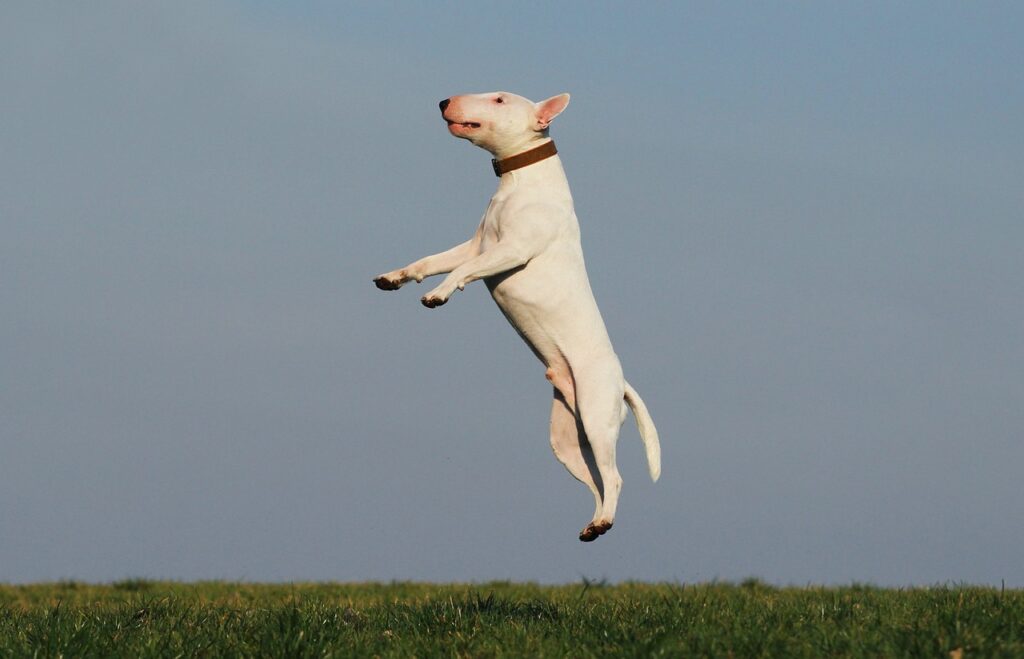To train your dog to pee outside, establish a routine, choose a designated spot, use a verbal command, reward good behavior, and be patient. Take your dog for a walk every day, giving them plenty of opportunities to pee. Use a phrase like “go potty” or “do your business” to associate it with going to the bathroom. Reward good behavior with treats and praise.
You can use these methods to train your dog to urinate outside:-
Create a routine:- Take your dog for daily walks at the same time, and allow plenty of opportunity for urination. While mature dogs can typically hold it longer, puppies may need to go outside every hour.
Select a specified area:- Every time you walk outside, take your dog to the area you’ve chosen for them to urinate. They will learn from this that this is the correct location.
Give a vocal command:- Pick a word such as “go potty” or “do your business,” and tell your dog to go to their allotted place with it each time. They will eventually connect this phrase with using the restroom.
Reward excellent behavior:- Give your dog lots of praise and a treat when they urinate outside. This will support the notion that it’s okay to urinate outside.
Have patience:- Your dog can need a few weeks or even months to grow used to urinating outside. With time and patience, they will pick up the skills you want them to.
Why Wouldn’t My Dog Urinate Outside?
Dog may refuse to pee outside due to fear, anxiety, medical issues, or untrained behavior. To train them, be patient, establish a routine, choose a designated spot, use a verbal command, and reward good behavior. If the dog still refuses, consult a veterinarian to rule out any underlying medical issues and provide additional advice on how to train them to pee outside. Remember to be consistent and patient with your dog’s behavior to ensure they train dog pee outside.
Your dog may not be pee outside for a variety of reasons, such as fear, anxiety, medical issues, or simply not being trained.
Try these suggestions if you’re experiencing problems teaching your dog to urinate outside:-
Have patience:- Your dog may need some time to adjust to urinating outside. Exercise consistency and patience when training.
Select a specified area:- Every time you walk outside, take your dog to the area you’ve chosen for them to urinate. They will learn from this that this is the correct location.
Give a vocal command:- Pick a phrase such as “go potty” or “do your business,” and tell your dog to go to their allotted place with it each time. They will eventually connect this phrase with using the restroom.
Reward excellent behavior:- Give your dog lots of praise and a treat when they urinate outside. This will support the notion that it’s okay to urinate outside.
It’s best to speak with a veterinarian to rule out any underlying medical concerns if your train dog still won’t pee outside. They could also be able to offer more guidance on teaching your dog to urinate outside.


How to know whether your dog is scared or nervous?
Common medications for anxiety in dogs include Fluoxetine (Reconcile), Clomipramine (Clomicalm), Trazodone (Trazodone), Dexmedetomidine (Sileo), and Alprazolam (Xanax). These medications are FDA-approved for treating separation anxiety, aggression, and other anxiety-related disorders.
To manage dog anxiety, create a secure environment, use positive reinforcement, avoid punishment, and consult a veterinarian for proper medication use.
When a dog is scared or nervous, they may display a range of behaviors.
Among the typical symptoms of anxiety in dogs are:-
1.Panting
2.Shivering
3.Shining
4.Moving slowly
5.Hiding
6.Destructive behavior
7.Aggression
8.Loss of appetite
9.Excessive licking
10.Avoidance
If you detect any of these symptoms in your dog, they may be anxious or afraid. The context of the conduct should be considered when evaluating certain behaviors, as they may be normal in specific settings.
To determine if your dog is scared or uneasy, observe their behavior and body language more closely. Dogs who are afraid may cower, tuck their tails, flatten their ears, widen their eyes, dilate their pupils, shake, pace, growl, or bark.
If you’re uncertain about your dog’s fear or anxiety, it’s crucial to consult a veterinarian or a professional dog trainer.
They can provide guidance on managing your dog’s behavior and help you identify its root cause.


How can a dog get over fear and anxiety?
In the event that your dog is fearful or nervous, there are a few things you may do to help them relax.
Here are some pointers:-
Establish a secure area:- Give your dog access to a calm, cozy area where they can go when they’re feeling nervous. This might be a bed, a crate, or a room with a door closed.
Establish a routine:- Since dogs enjoy consistency, make an effort to provide them with a regular daily schedule. They may feel less nervous and more safe as a result.
Apply positive reinforcement:- Give your dog attention, praise, and goodies when they behave in a composed, relaxed manner. This can assist children in learning to link circumstances that formerly caused them anxiety to pleasant emotions.
Refrain from punishing your dog:- Punishing your dog for nervous behavior could exacerbate the issue. Rather, concentrate on praising positive conduct and disregarding negative behavior.
Take expert assistance into consideration:- If your dog’s anxiety is severe or negatively affecting their quality of life, you may want to speak with a professional dog trainer or veterinarian. They can assist you in determining the root cause of your dog’s nervousness as well as offer suggestions for dealing with it.
Check out these links for more in-depth details on how to assist your dog overcome anxiety and fear:-
Typical drugs for canine anxiety?
Several popular drugs for canine anxiety include:-
• Fluoxetine (Reconcile):- Often used to treat aggressiveness, separation anxiety, and other anxiety-related issues, this drug has FDA approval for usage in dogs.
• Clomipramine:- also known as Clomicalm, is a drug that the FDA has licensed for use in dogs. It is frequently used to treat anxiety-related illnesses such as OCD and separation anxiety.
Trazodone:- Although not FDA-approved for usage in dogs, this drug is frequently used off-label to address behavioral problems like aggression and anxiety.
• Dexmedetomidine (Sileo):- This drug is FDA-approved for use in dogs and is frequently used to treat anxiety-related problems and noise aversion.
• Alprazolam, often known as Xanax:- Although it is not FDA-approved for usage in dogs, this drug is frequently used off-label to treat behavioral problems including anxiety.
It’s crucial to remember that these drugs should only be taken under a veterinarian’s supervision because they may combine with other medications and have possible side effects. The right prescription for your dog’s unique needs can be determined with the assistance of your veterinarian.


How long does it take for dogs to benefit from anxiety medication?
A veterinarian works with dogs to determine the best anxiety medication for their specific needs, ensuring it works effectively and safely
Depending on the drug and the dog, anxiety medications can take different amounts of time to start working in dogs. Anti-anxiety drugs often take four to six weeks to take full effect, according to the Whole Dog Journal.
Nonetheless, certain drugs, such as trazodone, may begin to act as soon as two hours after being administered . Some drugs, such as Xanax, could start working in 30 to 60 minutes .
It’s crucial to remember that these drugs should only be used under a veterinarian’s supervision because they may interact with other drugs and have possible negative effects . The right prescription for your dog’s unique needs can be determined with the assistance of your veterinarian.

